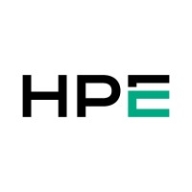

Panasas ActiveStor and HPE Sonexion are competing products in the data storage market. Panasas ActiveStor impresses with cost-effectiveness and robust support, while HPE Sonexion is notable for its advanced features, justifying its higher price.
Features: Panasas ActiveStor includes high-performance parallel data runtime, integrated data protection, and a scalable architecture that effectively supports mixed workloads. HPE Sonexion offers impressive scalability, comprehensive data management capabilities, and efficient data throughput, appealing to environments needing robust data handling and big data analytics.
Ease of Deployment and Customer Service: Panasas ActiveStor is noted for its straightforward deployment with minimal downtime and seamless integration, supported by excellent customer service. HPE Sonexion's deployment is more complex, balanced by thorough support and training to address installation challenges.
Pricing and ROI: Panasas ActiveStor has a lower setup cost, providing a quick return on investment. HPE Sonexion, with a higher initial cost, is seen as a valuable investment due to efficient data management and long-term benefits.
| Product | Market Share (%) |
|---|---|
| HPE Sonexion | 1.0% |
| Panasas ActiveStor | 0.8% |
| Other | 98.2% |
HPE Sonexion is a flexible storage solution designed for high-performance computing environments, delivering efficient data management and rapid access in demanding scenarios.
HPE Sonexion provides scalable storage solutions with seamless integration and robust data management capabilities, perfect for users looking to optimize compute performance. Designed to tackle large datasets, it is ideal for industries requiring reliable and fast data access. Leveraging Lustre file systems, it ensures efficient throughput and bandwidth necessary for computational workloads.
What are the key features of HPE Sonexion?HPE Sonexion sees widespread adoption in sectors such as research, financial services, and healthcare, where quick access to vast amounts of data is critical. Its robust features make it a preferred choice for organizations focusing on scientific simulations, real-time data analysis, and other intensive computational tasks.
In our most recent product, the ActiveStor Ultra, Panasas has developed a new approach called Dynamic Data Acceleration Technology. It uses a carefully balanced set of HDDs, SATA SSD, NVMe SSD, NVDIMM, and DRAM to provide a combination of excellent performance and low cost per terabyte.
• HDDs will provide high bandwidth data storage if they are never asked to store anything small and only asked to do large sequential transfers. Therefore, we only store large Component Objects on our low-cost HDDs.
• SATA SSDs provide cost-effective and highbandwidth storage as a result of not having any seek times, so that’s where we keep our small Component Objects.
• NVMe SSDs are built for very low latency accesses, so we store all our metadata in a database and keep that database on an NVMe SSD. Metadata accesses are very sensitive to latency, whether it is POSIX metadata for the files being stored or metadata for the internal operations of the OSD.
• An NVDIMM (a storage class memory device) is the lowest latency type of persistent storage device available, and we use one to store our transaction logs: user data and metadata being written by the application to the OSD, plus our internal metadata. That allows PanFS to provide very low latency commits back to the application.
• We use the DRAM in each OSD as an extremely low latency cache of the most recently read or written data and metadata.
To gain the most benefit from the SATA SSD’s performance, we try to keep the SATA SSD about 80% full. If it falls below that, we will (transparently and in the background) pick the smallest Component Objects in the HDD pool and move them to the SSD until it is about 80% full. If the SSD is too full, we will move the largest Component Objects on the SSD to the HDD pool. Every ActiveStor Ultra Storage Node performs this optimization independently and continuously. It’s easy for an ActiveStor Ultra to pick which Component Objects to move, it just needs to look in its local NVMe-based database.
We monitor all NAS reviews to prevent fraudulent reviews and keep review quality high. We do not post reviews by company employees or direct competitors. We validate each review for authenticity via cross-reference with LinkedIn, and personal follow-up with the reviewer when necessary.